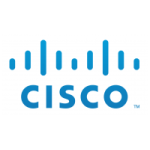ADVANCED ADMINISTRATION OF UNIFIED COMMUNICATIONS MANAGER AND FEATURES (AAUCMF)
Course Overview
Advanced Administration for Unified Communications Manager and Features (AAUCMF) is a 5-day instructor led course that is intended for experienced unified communications administrators who need in-depth knowledge of Cisco Unified Communications Manager advanced features, services, and troubleshooting. This course is intended to be a follow-on course to ACUCM+AUC, and combines elements from off-the-shelf courses CVOICE, ICOMM, CIPT 2 and TVOICE as well as additional material developed exclusively by Sunset Learning Institute. The class utilizes Cisco Unified Communications Manager 11.5, and will employ the North American Numbering Plan (NANP). Both SCCP and SIP phones are implemented, as well as both H.323 and SIP gateways. After a short review of Unified Communication architecture and basic administration, the course begins with a discussion of new and changed features from previous versions of CUCM. It then moves into implementation of a multi-site dial plan architecture including signaling, call routing for multiple sites with overlapping directory numbers, digit manipulation, automated alternate routing, PSTN backup- and TEHO implementation. Next, call admission control, hardware media resource implementation, and inter-cluster communications are addressed. Students will spend time implementing extension mobility, unified mobility (including single-number reach) and device mobility. The CUCM portion of the class concludes with a module on tools, tips and tricks for the Bulk Administration Tool and a lesson on reading CUCM trace files for troubleshooting. This course was developed to provide additional training for those who already have a basic understanding of CUCM and Unity Connection administration and are looking further training. This is not a certification or implementation course.

Course Objectives
After completing this course, students will be able to…
- Describe CUCM signaling to phones, gateways, and media resources (H.323, SIP, SCCP)
- Configure inbound and outbound call routing in a multisite environment with overlapping DNs
- Configure intersite dialing with PSTN backup using Local Route Groups
- Use class of control to control inbound call flow and permit blocking of inbound calls
- Implement Survivable Remote Site Telephony for both SCCP and SIP devices
- Implement intersite and intercluster Call Admission Control and intersite Automated Alternate Routing
- Implement DSP hardware media resources
- Implement Tail-End Hopoff (TEHO)
- Configure Extension Mobility, Unified Mobility (Single Number Reach and Mobile Voice Access), and Device Mobility
- Use CUCM Tools such as the Real Time Monitoring Tool to Monitor and perform basic Troubleshooting
- Deploy new CUCM 9.0 Features such as Native Call Queuing, Intercluster CAC and Deterministic Codec Selection
- Generate and Read Trace Files for SCCP, SIP and H.323 Call Setup and Resource Allocation
Course Prequisites
- To fully benefit from this course, students should have the following prerequisite skills and knowledge:
- CCNA Voice or equivalent knowledge, or
- ACUCM+AUC and additional field experience
Target Audience
- Experience Unified Communications Engineers
- Anyone who has attended ACUCM+AUC and needs more training on advanced features and troubleshooting
Course Outline
Module 1: Review of CUCM and Overview of New Features Module 2: Understanding End-User Implementation Options
- Lesson 1: Implementing End Users in CUCM Including LDAP Integration
- Lesson 2: Review of Cisco IP Phones and SCCP and SIP Signaling
- Lesson 3: Universal Device and Line Templates and Feature Group Templates
Module 3: Dial Plan Architecture
- Lesson 1: H.323 and SIP Protocols and Signaling
- Lesson 2: Local Route Groups
- Lesson 3: Inbound Calls Routing in a Multisite Environment
- Lesson 4: Implementing Survivable Remote Site Telephony
- Lesson 5: Implementing Cisco Unified SCCP SRST
- Lesson 6: Implementing SIP SRST
- Lesson 7: Implementing Communications Manager Express in SRST Mode
Module 4: Intersite and Intercluster Calling Architecture and Features
- Lesson 1: Locations-Based Call Admission Control and AAR
- Lesson 2: Media Resource Implementation (DSPs)
- Lesson 3: Native Call Queuing
- Lesson 4: Configuring Intercluster Enhanced Locations Call Admission Control
- Lesson 5: Configuring Tail End Hop Off
Module 5: Implementation of Features and Applications for Multisite Deployments
- Lesson 1: Implementing Cisco Extension Mobility
- Lesson 2: Configuring Cisco Unified Mobility
- Lesson 3: Implementing Device Mobility
Module 6: Tools & Troubleshooting
- Lesson 1: BAT Tips and Tricks
- Lesson 2: Planning Firmware Upgrades
- Lesson 3: Reading Common Voice IOS Debug Output
- Lesson 4: Reading RTMT Trace Files
Labs:
- Lab 2-0: Preparing the Lab Environment
- Lab 2-1: Configuring LDAP Integration
- Lab 2-2: Implementing Site-Specific Device Pools
- Lab 2-3: Building SCCP Phones using the Self-Provisioning IVR
- Lab 2-4: Building SIP Phones
- Lab 3-1: Implementing Basic Multisite Connections
- Lab 3-2: Building Line/Device Class of Service
- Lab 3-3: Implementing Call Routing in a Multisite Environment
- Lab 3-4: Configuring Inbound Calling in a Multisite Environment
- Lab 3-5: Implementing SCCP and SIP SRST
- Lab 4-1: Implementing CAC and AAR
- Lab 4-2: Implementing Media Resources
- Lab 4-3: Configuring Hunting with Native Call Queuing
- Lab 4-4: Configure Intercluster Dialing over a SIP Intercluster Trunk
- Lab 4-5: Configure Intercluster Locations-Based Call Admission Control
- Lab 4-6: Implementing Tail-End Hopoff (TEHO)
- Lab 5-1: Configure Extension Mobility
- Lab 5-2: Configure Device Mobility
- Lab 5-3: Configuring Cisco Unified Mobility
- Lab 6-1: BAT Tips and Trick
- Lab 6-2: Planning Firmware Upgrades
- Lab 6-3: Reading Common Voice IOS Debug Output
- Lab 6-4: Reading RTMT Trace Files
Optional Additional Labs:
- Lab A1: Extension Mobility Cross Cluster
Lab A2: Generating CUCM CAR Tool Reports
What Our Students Have to Say


